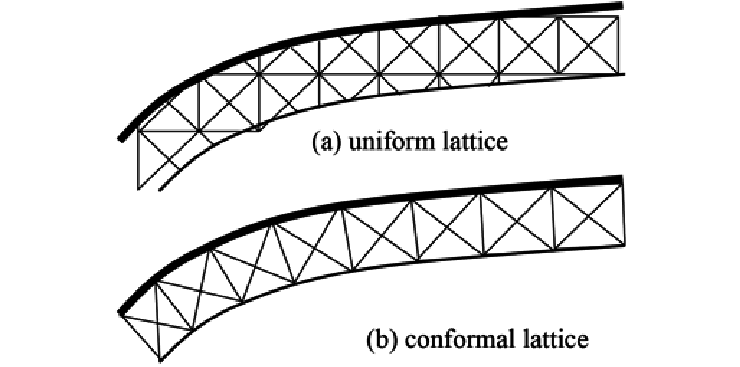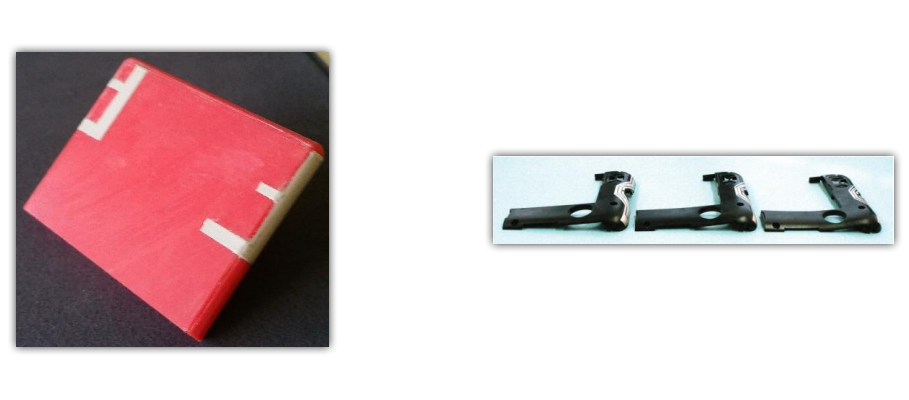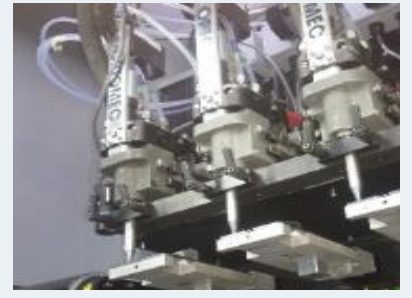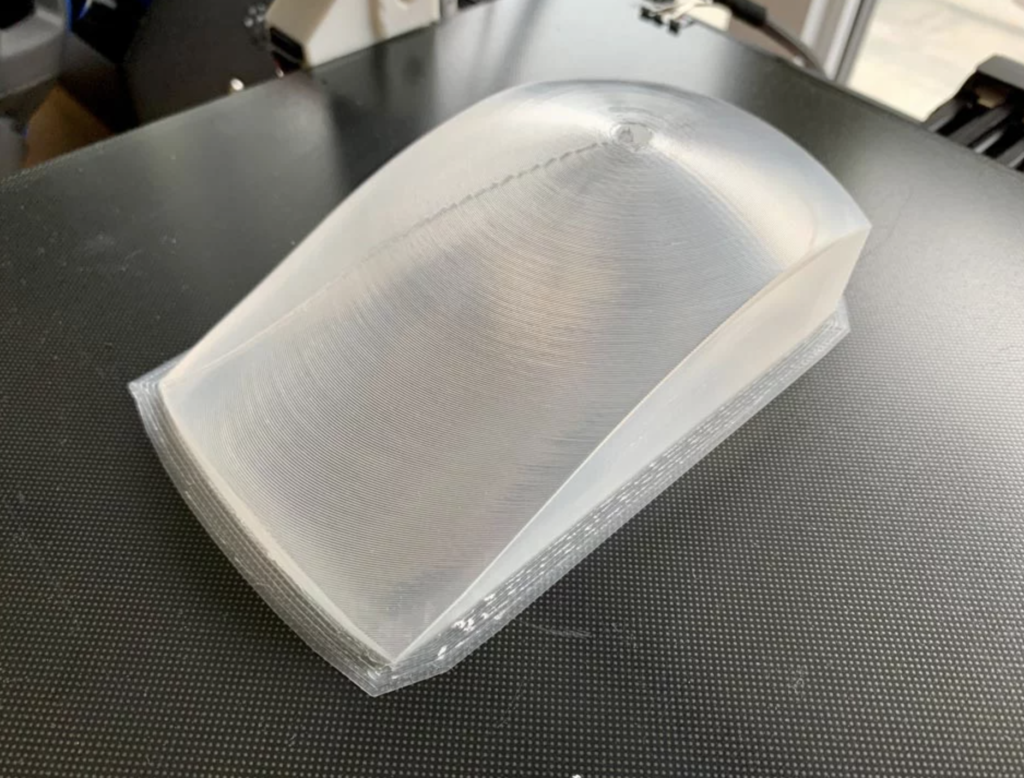For over a decade, conformal cooling for molds has been an oft-cited 3D printing application. Conformal batteries are talked about periodically, as well. Sometimes you’ll see a mention of conformal antenna or things like heat sinks. So, what does conformal mean? And what effects will it have on design and manufacturing? Essentially as outlined here in my article on flow, I’ll sum up the Flow Thesis as it stands right now.
We can redesign almost anything not as a blocky mess of parts but as an optimized holistic shape that maximizes the flow of energy through that component. If you build on this by making a discrete geometry that is better at performing these flow tasks than other geometries, then, you can make a material for one particular part and application that is higher performing. This component, or flow geometry, material can then have a reduced mass, improved performance, and lower weight, all while reducing assembly steps and part count, as well as the buy-to-fly ratio. If we then make this geometry conformal or indeed a true flow geometry, it will not be a blocky solid mess of Lego bricks that need to be assembled, but rather flow right around whatever other forms with which it co-inhabits a space. At the same time, this space itself can be radically altered because the flow form incorporates or makes obsolete fasteners, and does away with a lot of space inhabiting air and unnecessary elements. The resulting form factor can therefore be significantly improved and items can become thinner or be made to wrap around humans and goods. Simultaneously, we can engage in iterative engineering whereby we improve an item bit-by-bit, making it better all the time, subjecting it to real-life testing, customer feedback, and continuous improvement. In so doing, we will make better things faster than anyone else.

In this context, we shall look a little bit further at some conformal designs that showcase what can be done. In this nice example, we can see conformal cooling channels in a mold “to reduce the production cycle time and improve the part quality.” This part was made with Altair and Materialise 3-Matic.

Here, Carbon’s Design Engine tool showcase conformal lattices, in which the mesh of a lattice is generated relative to the object’s shape and surface, rather than independently of it. The lattice curves around the object, rather than being pasted onto it.
“Designing with conformal lattices means no open joints or hanging nodes,” says Hardik Kabaria, Carbon’s Director of Software Engineering. “Hanging nodes can create a stress concentration fracture, so if you have them in your work, it’s not a good design.”
Sciperio a research company associated with nScrypt has made conformal phase array antenna. In the video above, it is being used to transmit video.
“Directly printing active phased array antennas on curved surfaces will provide unique capabilities to the DoD (Department of Defense), but the ultimate goal is to do this at a fraction of the cost of traditionally manufactured arrays,” said Casey Perkowski, Sciperio’s Lead Developer on the project. “This will allow the DoD to use these antennas in a more ubiquitous manner and this will translate to commercial applications.”
nScrypt has been used before to make conformal 3D printed antenna, as we can see below.

One of the largest use cases of 3D printing in end-use parts are mass-produced conformal antenna for mobile phones, conducted with Aerosol Jet from Optomec. Reportedly, millions of phones and electronic devices are made in this way.

Four phones are held below on a platform, it is the phones that move.
Another way to enable planar printing of parts is to use a robot arm and smart toolpath planning to print conformal structures. This paper explains how to do so with three nozzles and helpfully explains that, “Compared to a traditional 3D printer, conformal printing can produce parts with good surface finish, less number of layers and enhanced mechanical properties.” Here, PETG, machine learning, robot arms and real -ime scanning are used to produce architectural parts. This paper describes how a conformal gripper is made.
All of these methods allow you to print structures on something curved or a conformal object itself. Gabriel Boutin, the designer behind the Kupol helmet, is turning Creality 3D printers into systems that can print in a planar fashion. He has planar slicers for you to use here. His work is important because it frees material extrusion from the cage that is the gantry and lets us print more true-to-life structures that would fit better in a human world.

Here, Faez Alkadi and friends show us how a material extrusion based direct write process could do this. Here, Jacob j. Adams and Co. show us how to build the cutest conformal electronics.

Sun Yun Jun and collaborators demonstrated how to print a WLAN bracelet antenna. In this case, working copper circuits were printed. Feel free to melt your mind a bit with this EMI invisibility cloak paper.
Here, conformal devices are used to improve radiotherapy for skin cancer. In another instance, a conformal 3D printed implant was used to treat glioblastoma and help deliver treatment to the brain in mice. I hope that the mice are grateful for all the pioneering work we humans do in mice cancer.
This really blew my mind: conformal microfluidics that are attached to and interact with organs, Manjot Singh, and what looks like its his entire local softball team. Here, conformal electrode arrays are used along with a “scanning and 3D printing process enabled the design and fabrication of a sensor-integrated anatomical human-machine interface (AHMI) in the form of personalized prosthetic hands that contain anatomically conformal electrode arrays for children affected by amniotic band syndrome.” I’m not super excited about the carbon nanotube inks being close to children, but a lovely idea aside from that. In this case, we see people making stretchable sensors. Here, boron nitride nanotubes are being used to make self powered sensors.
As we can see, there is a lot of work going on in very exciting areas with regard to conformal design and manufacturing. If our technology solutions have to fit the human and natural world, conformal design and engineering for flow will make those solutions fit a far more accurately and comfortably for us all.
Subscribe to Our Email Newsletter
Stay up-to-date on all the latest news from the 3D printing industry and receive information and offers from third party vendors.
You May Also Like
3D Printing Webinar and Event Roundup: April 21, 2024
It’s another busy week of webinars and events, starting with Hannover Messe in Germany and continuing with Metalcasting Congress, Chinaplas, TechBlick’s Innovation Festival, and more. Stratasys continues its advanced training...
3D Printing Webinar and Event Roundup: April 14, 2024
We’re starting off the week’s 3D printing webinars and events at ASTM AMCOE’s 11th Snapshot Workshop and MACH Exhibition. Stratasys continues its advanced training courses, SME is holding a virtual...
Polly the Duck to Receive 3D Printed Bill Prosthetic
In Williamson County, Texas, a story of resilience, innovation, and cross-community effort is unfolding, illustrating the bond between humans and wildlife. All Things Wild, a wildlife rehabilitation center, has been...
3D Printing News Briefs, April 3, 2024: Kickstarter FDM 3D Printer, Artificial Eyes, & More
In 3D Printing News Briefs today, we’re talking about an FDM 3D printer on Kickstarter, advancements in artificial eye creation, and 3D printed solenoids for electromagnets. Then we’ll move on...
































